Series Retrospective: Capture the memories of the ever-evolving world of Pokemon starting with Red and Blue and ending with a special look at the upcoming Diamond and Pearl versions.
Pokemon goes for the Gold & Silver

The first canon sequel to Pokemon Red and Blue and the first colorized Pokemon RPG adventure came out on October 15, 2000. Again, two versions, Gold and Silver, were released and exclusive Pokemon were contained in each. The gameplay was familiar, but among the sequel's additions were 100 new Pokemon, a new region called Johto, and additional Pokemon types: steel and dark. It also kept track of time after asking players the current time in the beginning of the adventure. A time element came into play for specific Gold and Silver creatures elusive during certain times of the day.
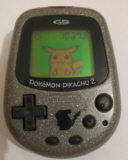
Pikachu was bigger than the Beatles by this point, so Nintendo put out a Tachagotchi clone called Pokemon Pikachu 2 GS on the same day that Gold and Silver hit stores. The digital pet's name contained a У2Ф because it was a sequel to a black-and-white virtual pet previously released in Japan. This version had a color LCD and more than 20 different activities. Eat, dance, fish and jump rope were just examples of what this Pikachu pet could do. Owners could earn watts by moving and playing mini-games and then present the watts to their Pikachu as a gift. Watts could also be obtained by trading with another Pikachu 2 GS via the built-in IR port. Trading could occur with a Gold or Silver game through Game Boy Color's similar IR port for special items. All of this effort would make Pikachu happy and cause him to do a flip.
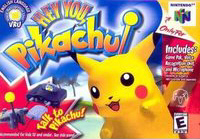
Pikachu lovers did more talking than walking the next month with the N64 release of Hey You, Pikachu! The game shipped with a voice recognition unit, which was used to communicate with a Pikachu that understood about 200 words. The gameplay, all about gaining the Pokemon's trust and playing a bunch of mini-games, was made for younger children. Thus, its only real challenge was getting the microphone to work properly. Rounding out the Pokemon releases in the year 2000 was Pokemon Puzzle Challenge, the GBC edition of N64's Puzzle League. This version featured monsters from the Gold and Silver games with the same Tetris Attack-style gameplay. In fact, that was the only big change Challenge had over League besides the title.
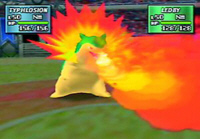
Pokemon Stadium turned out to be an annual event of sorts with the release date of Pokemon Stadium 2 falling in March 2001, one year after the first game. The biggest difference in the sequel was that it featured the Gold and Silver Pokemon and could play the Gold and Silver GBC cartridge through the Transfer Pak (sold separately this time around).
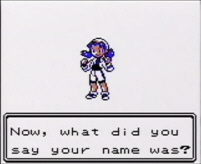
The third wheel of the Gold and Silver versions arrived in July 2001 with the release of Pokemon Crystal. Like Pokemon Yellow was the enhanced version of Red and Blue, Crystal was the slightly improved copy of Gold and Silver. Standout additions were the option to choose a female hero and the series of battles in the Battle Tower. With Game Boy Advance already released, the Crystal Version was a step behind on Game Boy Color, just like monochrome Yellow Version released alongside the superior GBC. It would take two years for an Advanced version of the Pokemon to debut on the already released 32-bit handheld.
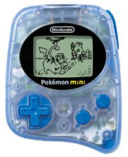
While the Pokemon role-playing adventures were finished on Game Boy Color and not ready for Game Boy Advance, a new quasi-handheld was released in between them in the form of Pokemon Mini in November of 2001. Like the virtual pet Pikachu a year before, this mini device contained a tiny LCD. This time, however, it was only a monochrome screen. On the plus side, the games were more advanced than the Pikachu-performed activities and mini-games. Different Mini cartridges were released like Pokemon Party Mini, Pokemon Pinball Mini, Pokemon Puzzle Collection and Pokemon Race. More were released overseas.